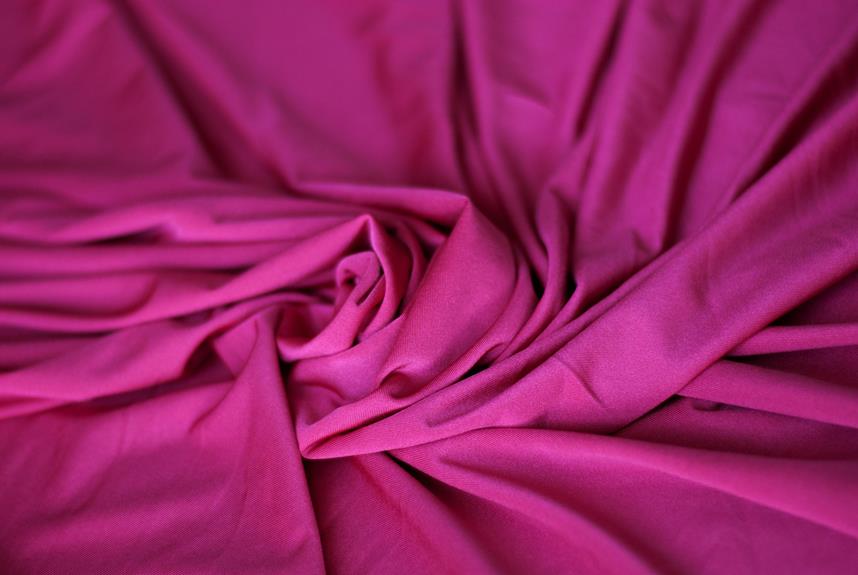When you're faced with the choice between Batiste and Flannel, it really comes down to your personal comfort and the climate you're in. Batiste offers a lightweight, breathable feel that's great for warmer days, while Flannel provides that cozy warmth that many crave during the colder months. Each fabric brings its own unique advantages, but which one truly meets your needs? As we explore the key differences and best uses for each, you might find that the right choice isn't as straightforward as it seems.
Table of Contents
Overview of Batiste
Batiste is a lightweight, breathable fabric that's perfect for warm weather, making it a favorite choice for summer clothing. When you choose batiste, you'll enjoy its soft texture and smooth finish, which feels great against your skin. This fabric is often made from cotton, but you can also find it in blends with linen or silk, enhancing its luxurious appeal.
You'll notice that batiste drapes beautifully, allowing for elegant designs in blouses, dresses, and even bedding. Its lightweight nature means it's easy to layer, keeping you comfortable without overheating. Plus, batiste holds dye exceptionally well, resulting in vibrant colors and patterns that pop.
One of the best things about batiste is its versatility. You can use it for various sewing projects, from delicate garments to lightweight curtains. If you're into embroidery, batiste provides a perfect canvas for your creativity, as its fine weave supports intricate designs without fraying.
When caring for batiste, you'll find that it's manageable; a gentle wash and low heat drying will keep it looking fresh. Overall, batiste's comfort and elegance make it a go-to choice for your warm-weather wardrobe.
Overview of Flannel
Flannel's fabric composition is key to its warmth, making it a popular choice for colder weather.
You'll find that its style and versatility options suit a variety of settings, from casual to more polished looks.
Let's explore how these characteristics set flannel apart in the fabric world.
Fabric Composition and Warmth
When you think of cozy fabrics, flannel often comes to mind due to its soft texture and warmth. This popular fabric is usually made from cotton, wool, or synthetic fibers, providing a comfortable feel against your skin. Flannel's brushed surface creates tiny fibers that trap heat, making it an excellent choice for colder weather.
Here are four key points about flannel's fabric composition and warmth:
- Material Variety: Flannel can be made from various materials, including cotton, wool, and blends, allowing you to choose based on your comfort preferences.
- Weight Options: Flannel comes in different weights, so whether you want something lightweight for layering or heavier for winter, there's a flannel for you.
- Thermal Insulation: The fabric's unique structure helps retain heat while still being breathable, ensuring you stay warm without overheating.
- Durability: Flannel is typically strong and can withstand frequent washing, maintaining its softness and warmth over time.
With its cozy attributes, flannel continues to be a go-to fabric choice for those chilly days and nights.
Style and Versatility Options
You'll find flannel to be incredibly versatile, easily transitioning from casual wear to stylish ensembles for various occasions. Whether you're headed to a weekend brunch or a cozy evening gathering, flannel can adapt to your needs.
Here's a quick look at how you can style flannel for different events:
| Occasion | Flannel Style | Accessories |
|---|---|---|
| Casual Outing | Oversized flannel shirt | Denim jeans, sneakers |
| Outdoor Adventure | Flannel-lined jacket | Cargo pants, hiking boots |
| Date Night | Tailored flannel dress | Heels, statement necklace |
With its range of colors and patterns, you can easily express your personal style. Layering is a breeze, as you can wear it under a coat or over a tee. The fabric's softness ensures comfort without sacrificing style. So, if you're looking for a fabric that provides both coziness and flair, flannel is a solid choice. You'll love how it elevates your wardrobe while keeping things relaxed and functional.
Key Differences Between Batiste and Flannel
When you're choosing between batiste and flannel, it's essential to consider their fabric compositions and how they affect warmth and comfort.
You'll also want to think about the care and maintenance requirements for each fabric.
Understanding these key differences will help you make an informed decision for your needs.
Fabric Composition Comparison
Batiste and flannel differ significantly in their fabric composition, impacting their texture, warmth, and breathability. Understanding these differences can help you choose the right fabric for your needs.
- Material: Batiste is typically made from lightweight, finely woven cotton or linen, while flannel usually consists of thicker, brushed cotton or wool.
- Weight: Batiste is lightweight and airy, making it ideal for warm weather. In contrast, flannel has a heavier weight that offers more insulation.
- Finish: Batiste has a smooth and crisp finish, lending a delicate feel, whereas flannel features a soft, fuzzy surface that provides a cozier texture.
- Structure: Batiste's tighter weave contributes to its sheer quality, while flannel's looser weave enhances its warmth and softness.
These fabric compositions affect not just how the fabrics feel against your skin but also how they perform in different conditions.
Choosing between batiste and flannel isn't just about preference; it's about matching the fabric's qualities to your specific needs, whether it's for a summer top or a winter blanket.
Warmth and Comfort Levels
Warmth and comfort levels vary greatly between batiste and flannel, catering to different seasonal needs and personal preferences.
Batiste is lightweight and breathable, making it an excellent choice for warmer months. If you prefer a fabric that allows air to circulate and keeps you cool, batiste's thin structure feels soft against your skin without trapping heat. This makes it perfect for summer bedding or lightweight shirts.
On the other hand, flannel is thicker and offers superior warmth, ideal for colder seasons. If you love snuggling up in a cozy blanket or wearing warm pajamas during chilly nights, flannel's brushed texture provides an inviting softness that retains heat. You'll appreciate how it wraps you in comfort, creating a snug atmosphere.
Ultimately, your choice between batiste and flannel will depend on your climate and comfort preferences. If you're looking for something airy and light, batiste is your go-to. But if you crave warmth and a comforting feel, flannel will be your best friend.
Assess your needs, and you'll find the right fabric to suit your lifestyle and seasonal changes.
Care and Maintenance Tips
Understanding the differences in care and maintenance between batiste and flannel can help you keep these fabrics looking their best and prolong their lifespan. Here are some key tips to consider:
- Washing: Batiste is lightweight and often requires gentle cycles or hand washing in cold water. Flannel, being thicker, can usually handle warmer washes, but always check the care label.
- Drying: Air drying is ideal for batiste to prevent shrinkage and maintain its delicate texture. Flannel can be tumble-dried on low heat, but avoid high settings to reduce the risk of pilling.
- Ironing: When ironing batiste, use a low heat setting and consider using a pressing cloth to prevent scorching. Flannel can tolerate higher heat, but it's best to iron it while slightly damp.
- Storage: Store batiste in a cool, dry place to avoid mildew, while flannel can be stored in a more temperature-variable environment, but keep it away from moisture to prevent mold.
Comfort and Feel Comparison
When you slip into a garment made from batiste, you'll immediately notice its lightweight and breathable texture, which contrasts sharply with the cozy, plush feel of flannel.
Batiste is smooth and soft against your skin, making it ideal for warm weather or layered outfits. Its airy nature allows for great ventilation, so you won't feel stifled on a hot day.
On the flip side, flannel wraps you in warmth and comfort, perfect for those chilly nights. Its thicker, brushed texture provides a sense of snugness that many people crave when they want to feel cozy. The weight of flannel can feel like a warm hug, making it a go-to fabric for loungewear and sleepwear.
Ultimately, your choice between batiste and flannel comes down to your comfort preferences and the climate you're in. If you prioritize breathability and lightness, batiste is your best bet.
However, if you love the feeling of warmth and softness, flannel will likely become your favorite. Each fabric offers a unique comfort experience that suits different occasions and personal styles.
Best Uses for Each Fabric
Batiste shines in warm-weather clothing, making it perfect for breezy blouses, summer dresses, and lightweight scarves. Its soft, airy nature allows for comfortable wear when temperatures rise.
However, flannel excels in cooler climates, providing warmth and coziness that's hard to beat.
Here are some of the best uses for each fabric:
- Batiste: Use it for delicate lingerie, ensuring breathability and comfort against your skin.
- Batiste: Create refreshing, flowy summer skirts that offer ease of movement and style.
- Flannel: Layer it in the form of cozy pajamas or loungewear during chilly nights, keeping you snug.
- Flannel: Opt for flannel shirts, perfect for a casual, laid-back look while staying warm.
Choosing between these fabrics depends on the season and occasion. If you're looking for something light and breathable, batiste is your go-to.
For those colder days, flannel wraps you up in warmth. Knowing the best uses for each fabric helps you make informed choices for your wardrobe.
Care and Maintenance Tips
Caring for batiste and flannel properly ensures they last longer and maintain their beauty, so follow these tips for each fabric.
For batiste, always wash it in cold water using a gentle cycle. Avoid harsh detergents that can damage its delicate fibers.
When drying, opt for air drying or a low-heat setting in the dryer. Iron batiste while it's slightly damp for the best results, and use a low-temperature setting.
Be cautious with embellishments or prints, as they can fade over time.
When it comes to flannel, you'll want to wash it in warm water to remove any lint effectively. Use a mild detergent, and avoid fabric softeners, as they can reduce the fabric's natural softness.
Dry flannel on medium heat, or hang it to maintain its shape and texture. If you notice pilling, gently shave it off with a fabric shaver to keep it looking fresh.
Frequently Asked Questions
Are There Any Eco-Friendly Options for Batiste or Flannel?
Yes, there are eco-friendly options available for both batiste and flannel. Look for organic cotton or sustainable materials that reduce environmental impact. Always check labels and certifications to ensure you're making an eco-conscious choice.
How Do Batiste and Flannel Compare in Terms of Durability?
When you compare durability, batiste feels lighter and might wear out faster, while flannel's thicker weave offers more strength and longevity. If you prioritize durability, flannel's your best bet for long-lasting wear.
Can Batiste Be Used for Outdoor Clothing?
You can use batiste for lightweight outdoor clothing, but it isn't the most durable option. It's breathable and soft, making it great for warm weather, yet it may not withstand rough conditions effectively.
What Are the Typical Price Ranges for Batiste and Flannel?
When you're shopping, you'll find batiste typically ranges from $5 to $15 per yard, while flannel usually costs between $7 and $20 per yard. Prices can vary based on quality and brand, so compare carefully.
Are There Any Common Allergies Associated With Either Fabric?
You might find that common allergies related to fabrics often stem from dyes or chemicals used in production rather than the materials themselves. Batiste and flannel typically don't cause allergies, but individual sensitivities can vary.
- How Does Ring Spun Cotton Affect Garment Fit and Shape Retention? - August 13, 2024
- What Are the Challenges in Producing Ring Spun Cotton? - August 13, 2024
- Is Ring Spun Cotton Suitable for Plus-Size Clothing? - August 13, 2024







